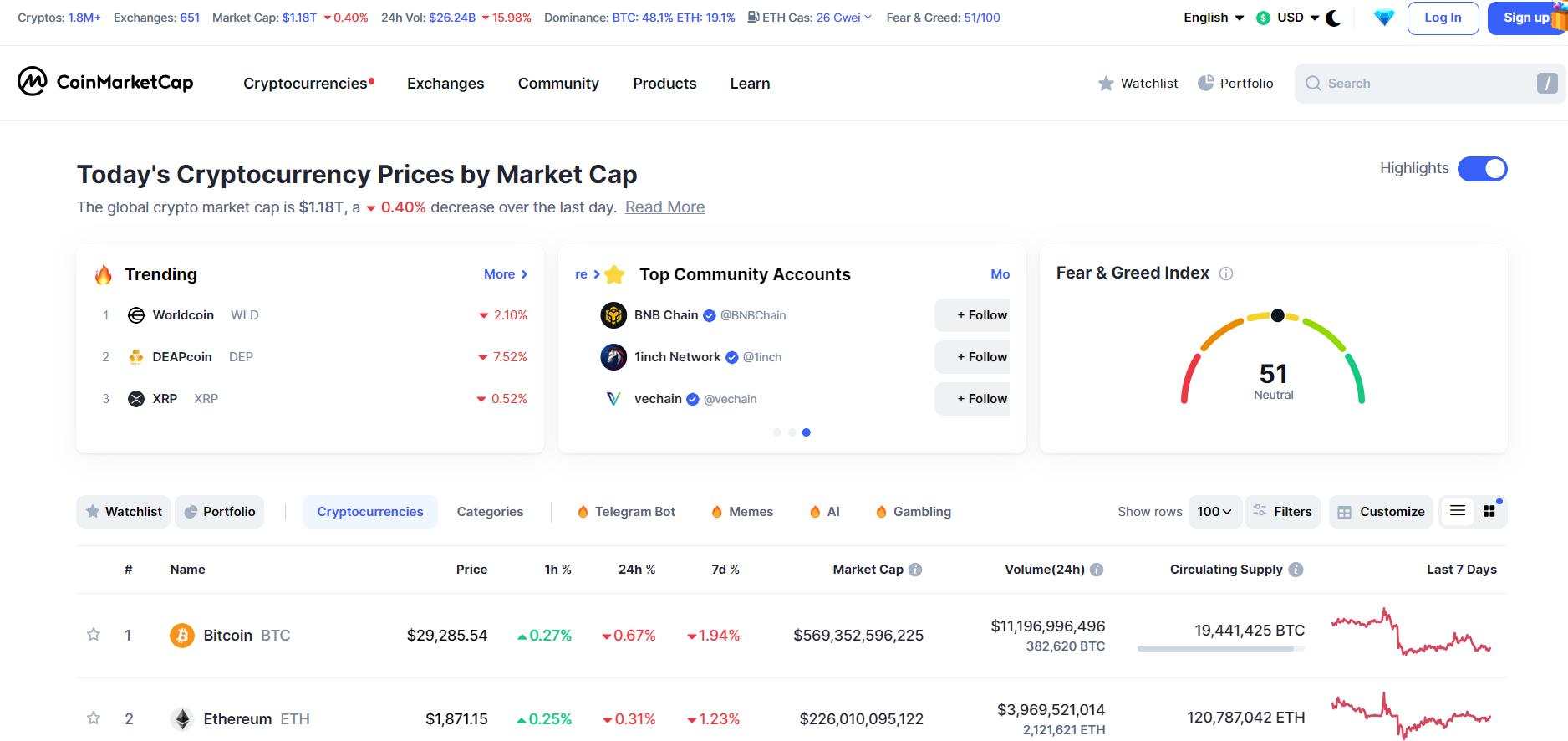Did you know that the first Bitcoin transaction for a physical item was for two pizzas worth 10,000 BTC? Fast forward to today, and understanding the crypto market is just as essential as knowing where to order your favorite slice! In this article, we dive into the key strategies for analyzing crypto market trends specifically for day trading.
Learn about crucial indicators, how to leverage technical analysis, and the importance of chart patterns. We’ll guide you through identifying support and resistance levels, utilizing the best tools for tracking trends, and improving your strategy with sentiment analysis. Furthermore, discover effective trading strategies, the role of moving averages and volume, and how to interpret candlestick patterns. Keep an eye on news events and gain insights into common mistakes to avoid.
With the insights from DayTradingBusiness, you'll be equipped to create a robust day trading plan, analyze historical data, and track essential metrics, all while harnessing the power of social media to gauge market sentiment. Get ready to elevate your crypto trading
What are the key indicators for analyzing crypto market trends?
Key indicators for analyzing crypto market trends include:
1. Price Action: Monitor price movements and patterns over time.
2. Volume: Assess trading volume to gauge market strength.
3. Moving Averages: Use short and long-term moving averages to identify trends.
4. Relative Strength Index (RSI): Determine overbought or oversold conditions.
5. MACD (Moving Average Convergence Divergence): Spot potential buy and sell signals.
6. Bollinger Bands: Analyze volatility and price levels.
7. Order Book Depth: Look at buy and sell orders to understand market sentiment.
These indicators help traders make informed decisions in day trading by providing insights into market momentum and potential reversals.
How can I use technical analysis for day trading cryptocurrencies?
To use technical analysis for day trading cryptocurrencies, follow these steps:
1. Choose Indicators: Use popular indicators like Moving Averages (MA), Relative Strength Index (RSI), and Bollinger Bands to gauge price trends and momentum.
2. Identify Patterns: Look for chart patterns like head and shoulders, double tops, and flags that suggest potential price movements.
3. Support and Resistance Levels: Determine key support and resistance levels to identify entry and exit points.
4. Volume Analysis: Monitor trading volume to confirm trends; increasing volume can indicate strong momentum.
5. Set Up Timeframes: Focus on shorter timeframes (1-minute to 15-minute charts) for quick trades, but also consider higher timeframes for overall trend context.
6. Risk Management: Use stop-loss orders to limit losses and maintain a risk-reward ratio of at least 1:2.
7. Stay Updated: Follow news and market sentiment, as they can impact price movements dramatically.
By applying these technical analysis techniques, you can make informed decisions for day trading cryptocurrencies effectively.
What role do chart patterns play in crypto trend analysis?
Chart patterns are essential in crypto trend analysis for day trading as they help identify potential price movements and market sentiment. Patterns like head and shoulders, triangles, and flags indicate bullish or bearish trends, guiding traders on entry and exit points. Recognizing these formations can enhance decision-making, reduce risk, and improve timing in volatile markets. By analyzing these patterns, traders can better anticipate shifts and optimize their strategies.
How do I identify support and resistance levels in crypto trading?
To identify support and resistance levels in crypto trading, follow these steps:
1. Chart Analysis: Use candlestick charts to visually inspect price movements. Look for areas where the price has repeatedly bounced back (support) or been rejected (resistance).
2. Horizontal Lines: Draw horizontal lines at these key price points where reversals occur. These lines represent potential support and resistance levels.
3. Moving Averages: Incorporate moving averages (e.g., 50-day, 200-day) as dynamic support and resistance levels. Prices often react around these averages.
4. Volume Profile: Analyze trading volume at different price levels. High volume at certain levels can indicate strong support or resistance.
5. Fibonacci Retracement: Use Fibonacci retracement levels to find potential support and resistance areas based on the asset's recent price movements.
6. Trend Lines: Draw trend lines by connecting highs or lows in the price chart. These can act as support or resistance during price fluctuations.
Monitor these levels closely during your day trading to make informed decisions.
What are the best tools for tracking crypto market trends?

The best tools for tracking crypto market trends include:
1. CoinMarketCap – Offers real-time price tracking and market cap data.
2. TradingView – Provides advanced charting tools and social networking features for traders.
3. CryptoCompare – Delivers comprehensive data on cryptocurrencies, including price, volume, and historical trends.
4. Glassnode – Analyzes on-chain data for deeper insights into market trends.
5. CoinGecko – Tracks cryptocurrency prices, trading volumes, and developer activity.
6. Santiment – Offers sentiment analysis and market indicators to gauge trader moods.
7. Binance – Features robust trading tools and analytics for traders on its platform.
Using a combination of these tools will enhance your ability to analyze crypto market trends effectively for day trading.
How can sentiment analysis improve my crypto trading strategy?
Sentiment analysis can enhance your crypto trading strategy by providing insights into market emotions and trends. By monitoring social media, news, and forums, you can gauge public sentiment around specific cryptocurrencies. Positive sentiment may indicate potential price increases, while negative sentiment could signal declines.
Integrate sentiment data with technical indicators for a more comprehensive view. For instance, if sentiment is bullish and technical indicators show a breakout, it may be a strong buy signal. Conversely, if sentiment turns negative during a bullish trend, it could be a warning to exit.
Using sentiment analysis helps you anticipate market movements, make informed decisions, and reduce emotional trading. Regularly track sentiment shifts to stay ahead of market trends and adjust your strategy accordingly.
What are the most effective trading strategies for day trading crypto?
The most effective trading strategies for day trading crypto include:
1. Technical Analysis: Use chart patterns, indicators like RSI or MACD, and moving averages to identify entry and exit points.
2. Scalping: Make quick trades to profit from small price changes, capitalizing on market volatility.
3. Momentum Trading: Buy cryptocurrencies showing strong trends and sell once momentum slows.
4. News Trading: Monitor crypto news and events that impact prices, trading based on anticipated market reactions.
5. Swing Trading: Hold positions for several days to capitalize on expected price swings while maintaining tight stop-losses.
6. Arbitrage: Take advantage of price differences across exchanges by buying low on one and selling high on another.
7. Risk Management: Always use stop-loss orders and limit your exposure to prevent significant losses.
Implementing these strategies effectively requires continuous market analysis and quick decision-making.
How do moving averages help in crypto trend analysis?
Moving averages smooth out price data to identify trends in the crypto market. They help traders spot bullish or bearish momentum by showing the average price over a specific period, like 50 or 200 days. When the price crosses above a moving average, it signals a potential uptrend; crossing below indicates a downtrend. Additionally, moving averages can act as support or resistance levels, providing entry and exit points for day trading. Using them in conjunction with other indicators enhances trend analysis and decision-making.
What is the significance of volume in crypto market trends?
Volume in crypto market trends is crucial because it indicates the strength of a price movement. High volume often signifies strong interest and can confirm a trend, while low volume may suggest a lack of conviction, making a trend unreliable. For day trading, analyzing volume helps traders identify potential entry and exit points. Sudden spikes in volume can indicate upcoming volatility, allowing traders to capitalize on price changes. Monitoring volume alongside price movements provides insights into market sentiment and helps in making informed trading decisions.
How can I interpret candlestick patterns for day trading?
To interpret candlestick patterns for day trading in the crypto market, focus on key formations and their implications. Look for bullish patterns like the hammer or engulfing candle, which suggest potential upward price movement. Conversely, bearish patterns like the shooting star or dark cloud cover indicate possible declines.
Pay attention to the size and color of the candlesticks. A long green candle shows strong buying pressure, while a long red candle indicates selling pressure. Analyze the patterns in the context of support and resistance levels to make informed decisions.
Combine candlestick analysis with volume trends; increasing volume on a breakout confirms the move. Use these insights to set entry and exit points effectively, adjusting your strategy based on market volatility.
What impact do news events have on crypto market trends?

News events can significantly impact crypto market trends by influencing investor sentiment and market volatility. Positive news, like regulatory approval or major partnerships, often leads to price surges. Conversely, negative news such as hacks or regulatory crackdowns can trigger sharp declines.
For day trading, stay updated on news from reliable sources, as these developments can create trading opportunities. Analyze how specific events affect price movements and trading volume to make informed decisions. Use tools like sentiment analysis to gauge market reactions and adjust your strategies accordingly.
## How Can I Analyze Crypto Market Trends to Choose the Best Markets for Day Trading?
To analyze crypto market trends for day trading, follow these steps:
1. **Use Technical Analysis**: Apply chart patterns, indicators (like RSI, MACD), and volume analysis to identify potential price movements.
2. **Monitor News and Events**: Stay updated on news, regulations, and market events that can impact cryptocurrency prices.
3. **Assess Market Sentiment**: Check social media, forums, and sentiment analysis tools to gauge trader emotions.
4. **Evaluate Historical Data**: Review past price movements and trends to predict future behavior.
5. **Identify Support and Resistance Levels**: Determine key levels where prices tend to reverse or stall.
By focusing on these areas, you can effectively analyze crypto market trends for day trading.
Learn more about: How to Choose the Best Crypto Markets for Day Trading
Learn about How to Choose the Best Crypto Markets for Day Trading
How do I analyze historical price data in cryptocurrency?
To analyze historical price data in cryptocurrency for day trading, start by collecting data from reliable exchanges. Use price charts to identify patterns, trends, and support/resistance levels. Apply technical indicators like Moving Averages, RSI, and MACD to gauge market momentum and potential reversals. Look for volume spikes to confirm price movements. Analyze news events and market sentiment, as they can significantly impact price action. Finally, backtest your strategies using historical data to refine your approach.
What are the common mistakes to avoid when analyzing crypto trends?

1. Ignoring fundamentals: Don’t just focus on price charts; consider the project's technology, team, and market demand.
2. Overlooking news impact: Major announcements or regulatory changes can drastically affect prices, so stay updated.
3. Relying solely on technical analysis: Use a blend of technical indicators and fundamental analysis for a well-rounded view.
4. Failing to set clear goals: Define your trading strategy and risk tolerance to avoid impulsive decisions.
5. Neglecting to manage risk: Always use stop-loss orders and never invest more than you can afford to lose.
6. Chasing losses: Avoid the temptation to overtrade to recoup losses; stick to your plan instead.
7. Ignoring market sentiment: Pay attention to social media and community discussions, as sentiment can drive trends.
8. Skipping backtesting: Test your strategies on historical data to identify potential pitfalls before live trading.
How can I use social media to gauge crypto market sentiment?
To gauge crypto market sentiment using social media, follow these steps:
1. Monitor Key Platforms: Focus on Twitter, Reddit, and Telegram. These platforms are hotspots for crypto discussions.
2. Track Hashtags and Keywords: Use relevant hashtags like #crypto, #Bitcoin, and #Altcoin to find trending topics and sentiments.
3. Engage with Influencers: Follow crypto influencers and analysts. Their opinions often shape market sentiment.
4. Analyze Sentiment Tools: Utilize tools like LunarCrush or Santiment that aggregate social media sentiment data for specific cryptocurrencies.
5. Observe Trading Discussions: Join discussions in crypto groups or forums to gauge trader sentiment and reactions to news.
6. Evaluate Engagement Levels: Look at likes, shares, and comments on posts. High engagement often correlates with strong sentiment.
7. Identify Trends Over Time: Monitor sentiment changes over days or weeks to spot emerging trends or shifts in market mood.
By applying these methods, you can effectively assess crypto market sentiment and make informed trading decisions.
What metrics should I track for successful crypto day trading?
Track the following metrics for successful crypto day trading:
1. Price Action: Monitor real-time price movements and trends.
2. Volume: Analyze trading volume to gauge market interest and confirm trends.
3. Volatility: Measure price fluctuations to identify potential trading opportunities.
4. Liquidity: Ensure sufficient liquidity for smooth entry and exit of trades.
5. Market Sentiment: Use social media and news sentiment to anticipate market moves.
6. Technical Indicators: Utilize tools like RSI, MACD, and moving averages for entry and exit signals.
7. Order Book Data: Examine buy and sell orders to understand market depth.
8. Timeframes: Analyze multiple timeframes for a comprehensive view of market trends.
Focusing on these metrics will help you make informed trading decisions.
How do I create a day trading plan based on market trends?
To create a day trading plan based on crypto market trends, follow these steps:
1. Identify Your Goals: Define your profit targets and risk tolerance for day trading.
2. Select Indicators: Use technical indicators like Moving Averages, RSI, and MACD to analyze market trends.
3. Analyze Price Action: Look for patterns in price movements, such as support and resistance levels.
4. Stay Updated: Monitor news and market sentiment that can influence crypto prices.
5. Set Entry and Exit Points: Determine specific conditions for entering and exiting trades based on trend analysis.
6. Risk Management: Set stop-loss orders to limit potential losses.
7. Review and Adjust: Regularly assess your trading performance and adjust your strategy based on what works.
By following these steps, you can effectively analyze crypto market trends and create a solid day trading plan.
Learn about How to Create a Day Trading Options Plan
Conclusion about How to Analyze Crypto Market Trends for Day Trading
In conclusion, effectively analyzing crypto market trends is essential for successful day trading. By leveraging key indicators, technical analysis, and understanding market sentiment, traders can make informed decisions. Utilizing tools for tracking trends and recognizing chart patterns, support and resistance levels, and candlestick formations further enhances trading strategies. Avoiding common pitfalls and maintaining a disciplined approach will lead to better outcomes. For more in-depth insights and guidance on mastering these techniques, DayTradingBusiness is here to support your trading journey.
Learn about How to Stay Updated on Crypto Market News for Day Trading